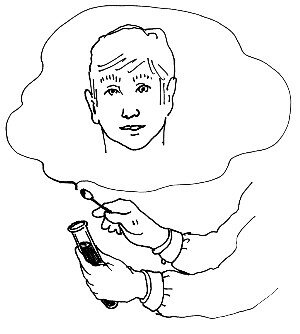STRANGE BUT TRUE- Face it: DNA can paint a portrait

Q. Blood found at the scene of a murder is probably the killer's, but the DNA doesn't match any in the database. So how can authorities draw up a sketch of the murderer's face for their search? Assume it's sometime in the future and the science of genetics has progressed accordingly. –J. Teixeira
A. Forensic experts say that if features such as eye and hair color are determined by one or a few genes, identifying these traits of a suspect may be relatively simple, though height and weight may be harder, says Nigel Calder in Magic Universe. A fascinating line of research regarding faces blends fundamental and forensic science. No two faces are ever exactly the same, not even those of identical twins. If Mother Nature varies human faces by shuffling a reasonably small number of genes, each definable face should be genetically traceable.
In fact, says Calder, researchers at University College of London have experimented with matching 3-D scans of volunteers' faces with their DNA samples. As medical physicist Alf Linney put it, "Sometime in the future we hope to be able to produce a photorealistic image of an offender's face, just from the DNA in a spot of blood or other body fluid found at a crime scene," i.e., leaving one's face in a DNA fingerprint.
Q. Egyptian mummies of 6,000 years ago– people and pets–you've heard about. But how about mummies out of "Nature's freezer" from 10,000-40,000 years ago? –E. Hillary
A. In Egypt, some 70 million people over a 3,000-year span wound up going through the elaborate two-month mummification process, and not just the pharaohs but virtually everyone who could afford it, says Jocelyn Selim in Discover magazine. Millions of animal mummies were buried right alongside their owners.
Nature did it cheaper and simpler. Animals such as woolly mammoths, stag moose, and steppe bison were preserved in the perennially frozen tundra, or permafrost, of northern Russia, Finland, Norway, Sweden, Canada and Alaska. They underwent a form of natural mummification, resulting in desiccated or dried-out bodies, says Ian M. Lange in Ice Age Mammals of North America. Not freeze-dried in the camping food sense, but rather with body moisture frozen in place, and in time the ice separated from the carcass, leaving behind a shrunken, dried body. This happened to early people as well, such as the "bog men" of Scandinavia. The remains of hair, skin, innards, and facial features add greatly to our knowledge of Pleistocene life.
Preservation of some animal cadavers is so good, adds Val Geist of the University of Calgary, that a friend made soup from well-preserved horse bones (awful!) and the neck of a 35,000-year-old Alaska long-horned bison (not bad).
"Some 18 ice ages have come and gone over the past 2 million years, with only mummies of the last ice age still around," he says.
Q. You hear a lot about the 'wind chill factor' on the Weather Channel. How do you figure WC anyway– what's the formula? –P. Michaels
A. It'll be a cold day in Helena or anywhere else before people start committing this one to memory, or the Celsius version either: Windchill (F) = 35.74 + .6215T - 35.75(V to .16 power) + .4275T(V to .16 power), where T is temperature and V is wind speed in mph, says the National Oceanic and Atmospheric Administration's National Weather Service. Uggh! You can use your calculator to figure that a 15 mph wind will make 0 degrees F feel like -19F to people or animals (far easier is to consult a WC chart!). Though your car's radiator won't "feel" the WC, it will drop to the ambient temperature faster. For example, if it's -5 outside with -26 WC, your car will feel only the -5 but will chill down faster once leaving the garage.
Q. Why is vitamin C called vitamin C, and what is a vitamin anyway? Whatever happened to vitamins F and G? –G. Wald
A. The C indicates it was the third vitamin ever identified, say Penny Le Couteur and Jay Burreson in
Napoleon's Buttons: 17 Molecules That Changed History. The naming system has some flaws though: The word "vitamin" comes from a contraction of "vital" and "amine," meaning a nitrogen-containing organic compound, because it was originally thought all vitamins contained at least one nitrogen atom. But only the B vitamins actually do. The original B vitamin was later discovered to consist of more than one compound, hence vitamin B1, B2 etc (but no 4, 8, 10, 11). Also, several supposedly different vitamins were found to be the same compound, and thus the terms vitamin F and vitamin G have fallen out of use.
Now for a pet curiosity: Why don't your dog and cat need as much dietary vitamin C as you do?Actually, they need none at all, says Le Couteur. In both-and most other mammals– ascorbic acid is made in the liver from the simple sugar glucose. Humans are one of the exceptions and would do well to get their "RDA" of C.
Send STRANGE questions to brothers Bill and Rich at .